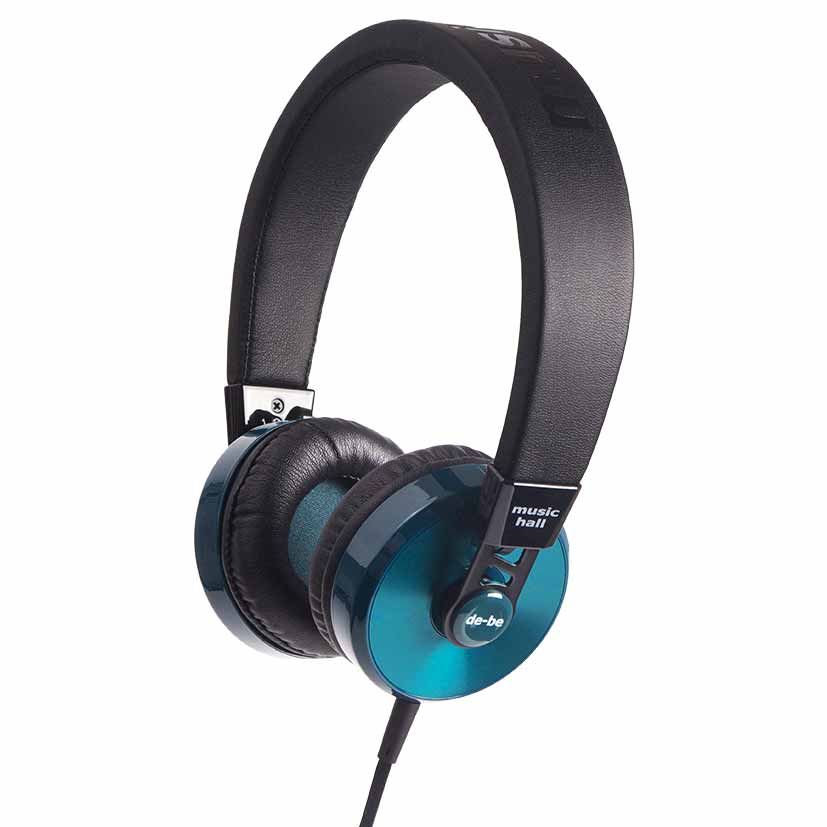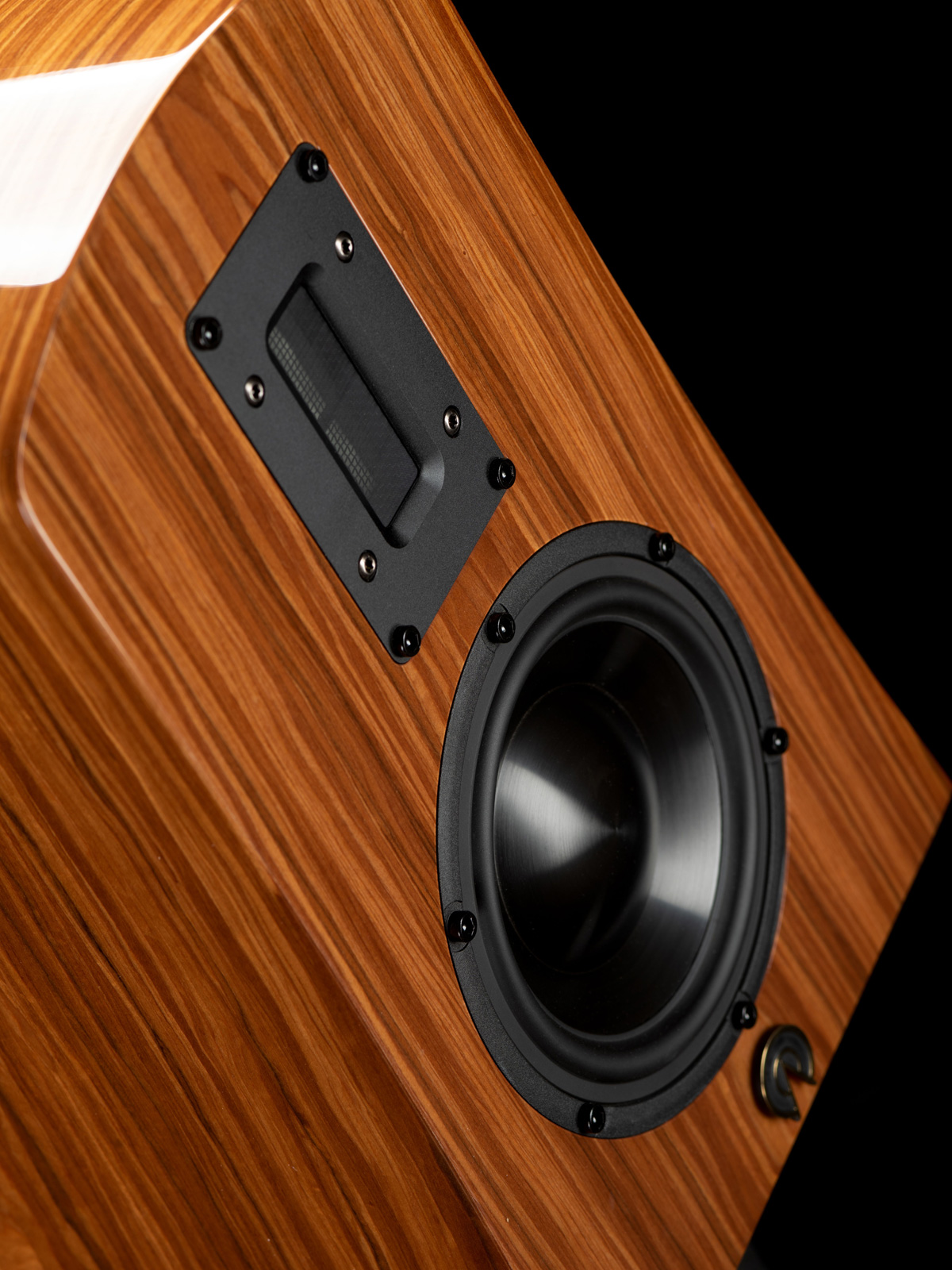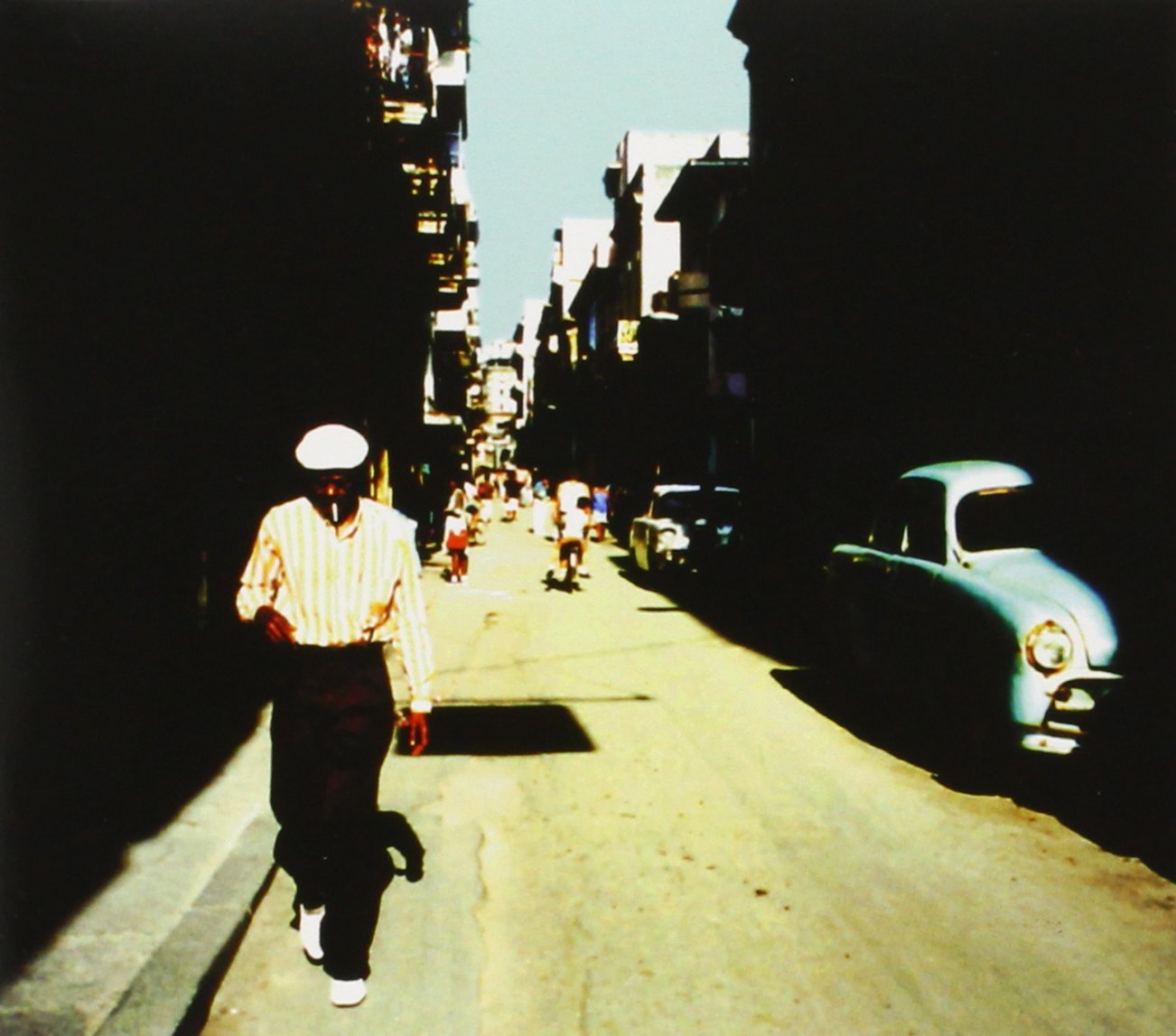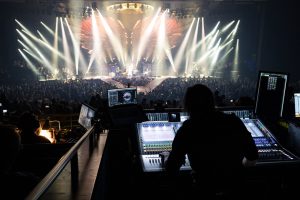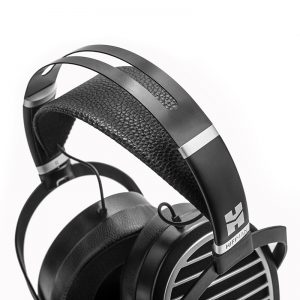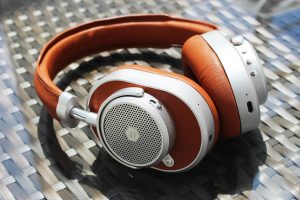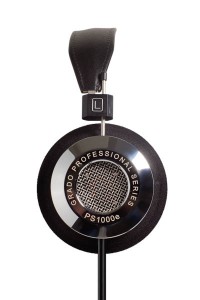Admittedly, I am not a headphone enthusiast. I have an old pair of open backed Grado SR 60s used occasionally for casual listening around the house. For music on the go I carry a pair of Klipsch S4i earbuds. Both pairs of headphones offer pleasingly smooth response and low coloration with a wide range of music. However, there are times when I wished for the better noise isolation of an over ear designs. Enter the Music Hall de-be dynamic driver headphones.
The de-be headphones are Music Hall's first entry into the headphone market. One might consider Music Hall somewhat late to the headphone party, however, if you know anything about the brand, it's that they do not offer product until exhaustively researching design, suppliers, assembly, and most importantly quality of sound to maximize performance per dollar.
The first thing you notice about the de-be is their remarkable teal color. The teal color certainly sets the de-be headphones apart from the crowd. The comfortable black headband is embossed with the Music Hall brand in lower case letters. The dense cylindrical ear cups contain 40mm dynamic drive units with frequency response of 20Hz – 20KHz. Sensitivity and impedance are listed as 110dB and 32 ohms respectively.
The ‘phones come with a three foot detachable cable with mini plugs at both ends. The flat cable is designed to minimize tangling and transmission of noise. Both left and right ear cups have and input for the cable which also functions as a microphone and control for mobile devices. The ear pads are made with stitched soft black foam filled material that effectively covers the ears and insulates the listener from extraneous noise. I am not sure if the ear pads are user replaceable. Over the course of several weeks, the Music Hall de-be headphones proved durable with frequent use.
The main source for listening was my iPhone playing favorite playlists while at the gym, relaxing at home, or doing work at the laptop on the dining room table. On several occasions I plugged the de-be into the headphone jack of my esteemed Bel Canto C7R receiver using a ¼ adapter. Additionally, if I anticipated waiting in-line where annoying music was going to be pumped at me from loud speakers overhead such as at Chipotle or Habit, I would take the de-be along for the ride.
The first admirable quality of the de-be is their tidy and timely bass response. Like a subwoofer that's perfectly integrated with the main system and the room, de-be's bass response provided great depth and pace to the music. The late Tito Puente performance of "Tokyo Blues" on the Concord album Royal T moves with relentless rhythm and swing propelled by the tumbao of long time Puente bassist Bobby Rodriguez. The momentum of this tune is captivating and expertly represented by the de-be. "Yes, more cowbell, please!"
If the perfect syncopation of Afro-Cuban bass and conga drum are not your thing then how about "Never Catch Me" by Flying Lotus and Kendrick Lamar from the album You're Dead featuring Thunder Cat on six string bass? The de-be throbbed with speed and low frequency energy. The hectic bass drum beat sounded like an angry man pounding on the floor above you with the heel of his boot. Those seeking overstated, ill-timed, and murky bass response look elsewhere. The bass produced by the Music Hall de-be is tight, tucked in, and on tempo.
The de-be midrange qualities were also admirable. Listening to Placido Domingo sing his heart and lungs out on "Nessun Dorma" from Puccini's Turandot with Herbert von Karajan and the Wiener Philharmoniker left me deeply moved. The de-be is superb communicator of orchestral dynamics and emotions. The de-be also conveyed authentic sense of space and ambiance embedded in the 1982 Deutsche Grammophon recording.
"Our Day Will Come" by Amy Winehouse from her posthumous double LP Lioness: Hidden Treasures is two minutes and forty nine seconds of pure pleasure. The late Ms. Winehouse's distinctive voice is buoyed by irresistible reggae beat and doo-wop backing vocals. If you saw my de-be adorned head bopping up and down in rhythm while watering the front lawn (on my designated drought restricted evenings), I was very likely listening to this track. The de-be effectively attenuated the rushing sound of water from the hose and allowed me to enjoy the quality of recordings.
All in all, the Music Hall de-be is a very confortable and satisfying listen. If I had to single out one aspect of the headphone's performance to improve upon, it would be in the area of high frequency extension. At times, the de-be sounded a touch rolled off in the top end when compared with the open backed Grado SR 60 or Klipsch S4i earbuds. The Grado SR 60, however, are simply not practical travel pieces because of their captive 6 ft. cable and inability to seal out extraneous noise. Furthermore, as most ear bud users know, getting the buds to stay perfectly in place is tricky business resulting in inconsistencies of sound. Thus, when choosing a headphone for music on the go, the teal de-be was at top of the list.
In closing, if you already own a fine pair of pricey cans and are seeking a good sounding durable set that travels well and don't require a headphone amp, I think you'll find that the Music Hall de-be are not that far off the mark from your reference. If you're a causal headphone user on a budget and want next level performance from your playlists at the gym, on a hike, or walking across campus, the Music Hall de-be are recommended with confidence.
de-be Headphones
$199
Music Hall
http://debe.musichallaudio.com




